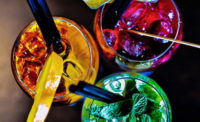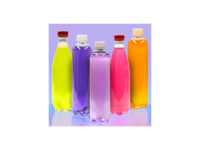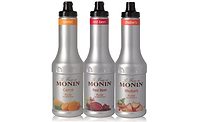When formulating beverages, it’s important to consider that color not only contributes to product attractiveness, but can influence consumers’ purchasing decisions as they scan the aisles for products with “clean labels” and more “natural” ingredients.
Natural ingredients have become more sought-after when health-conscious consumers purchase food and beverages. For 67 percent of consumers worldwide, the clarity of ingredients and additives determines their choice of food and drinks, according to a July GNT Group study titled “What’s on the Label Matters: Looking at How Front of Pack and Ingredient Declarations Influence Purchasing Behavior.”
The Mierlo, The Netherlands-based company surveyed more than 5,000 consumers in 10 countries in Asia, America and Europe and found that consumers are paying special attention to coloring ingredients.
“For nearly two-thirds (60 percent) of consumers worldwide, the absence of artificial colorants is of major importance to their purchasing decision. Additionally, the presence of a front-of-pack icon stating the product is ‘colored with fruits and vegetables’ resulted in an increased willingness to pay more for that product,” the report noted.
Another consumer insight study from Milwaukee-based Chr. Hansen Inc. notes that social media is challenging beverage brands that are using artificial flavors and colors. “As a result, the carbonated soft drinks and juice-based drinks industries have a growing interest in using more natural ingredients,” says Commercial Technical Manager Pernille Borre Arskog.
“The artificial color market is declining while the market for natural colors is growing globally,” Arskog says. “Markets such as Europe, Japan and Australia have for almost a decade been predominantly using natural solutions, but now we also see China, India and the USA take great strides toward natural color solutions, lately exemplified with the announcements from Nestlé and Kraft.
“Globally, certain markets are debating if artificial colors should use a warning label on the food product or whether artificial colors should be banned entirely,” he continues. “Markets like the Middle East and Peru have decided the latter route for colors like Yellow 5. This illustrates how some authorities react to the increasing consumer desires to stop using artificial colors.”
Boom in natural
In response to consumer demand for more natural colors, Darmstadt, Germany-based Doehler Group developed its Crystal Clear Colours 2.0., which offers a wide range of bright colors from natural sources.
“For example, in the past, the only way to achieve a ‘warm orange,’ ‘sunny yellow’ or ‘soft yellow’ in clear beverages without affecting the taste profile negatively was by using artificial colors,” says Doehler’s Head of Business Unit Colours Christian Benetka Uher. “This has changed, and these color tones can now be achieved in clear beverage applications.
“This is especially relevant when replacing azo-colorants like sunset yellow (E110), quinoline yellow (E104) or tartrazine (E102),” he continues. “The shining, brilliant color tones we use are based on purely natural coloring principles such as paprika extract, beta carotene or lutein.”
ADM/WILD Flavors and Specialty Ingredients, Erlanger, Ky., also continues to develop natural color alternatives for beverage-makers. The company offers its Colors from Nature line, which is naturally derived from fruit. Its new Acid-Stable Blue remains blue in a pH range from 2.5 to 8.0, and is ideal for a wide variety of applications including alcohol beverages, carbonated soft drinks, flavored waters, dairy and more, the company says.
“The radiant blue provides the foundation for other colors not previously available naturally, including green, purple and an expansive palette of new color options,” says ADM/WILD Flavor’s Vice President of Marketing Mark Rainey.
Although more beverage brands are replacing synthetic colorants with natural colors, Skokie, Ill.-based Sethness’s Technical Director David Tuescher says natural alternatives are not challenge-free because “natural” is not defined by the U.S. government the same way “organic” is.
“Organic is defined as being made without using artificial chemicals, but in the United States, claiming something as ‘natural’ is risky,” Tuescher says. “Sethness believes that companies will continue their pledge to replace synthetic colors with natural colors. When companies see their competitors removing artificial colors, they have been quickly following suit.”
Jody Renner-Nantz, senior application scientist for D.D. Williamson (DDW), Louisville, Ky., agrees. “Europe’s switch to eliminate artificial colorings in children’s food has also influenced U.S. consumer demand,” she says. “Certain food categories will continue to include [Food Drug & Cosmetic Act] (FD&C) colors for stability and economy. For example, sports drinks in blue and green hues.”
The largest categories for non-FD&C colors are caramel, anthoycyanins, cochinel and carotenoids. “There is smaller demand for red beet, turmeric and spirulina, which are more challenging to source for beverage applications,” she adds.
Celebrating “135 Years of Caramel Color,” Sethness Products Co. offers more than 80 caramel colors and has spent more than three years developing low 4 methylimidazole [4MEI] alternatives for its Class IV liquid and powdered caramel colors in response to California Proposition 65, which requires products that contain 4 MeI to list the ingredient as a possible carcinogen.
“We feel California’s decision was based on poor science,” says Brian Sethness, senior sales director for Sethness. “The U.S. Food and Drug Administration (FDA) has concluded that caramel color is safe and it has been listed as GRAS.”
A rainbow of hues
Brown is the leading hue for non-alcohol beverages, excluding bottled water, coffee and juices, followed by yellow and red, according to Innova Market Insights, Duiven, The Netherlands.
Brian Sethness says that Class I caramel colors are the fastest growing segment of caramel colors because “they meet consumer demand for cleaner labels.” He adds that Sethness’ selection of liquid and powdered caramel colors for beverage applications includes minimally processed Class I caramel colors, cola-friendly Class IV caramel colors and certified organic caramel colors.
Flavor trends also are influencing color options. Anaheim, Calif.-based colorMaker Inc. President Stephen J. Lauro says the company is fielding numerous requests for “spicy” colors such as pumpkin orange, lime green and angry apple red, and working on requests for colors that align with “delicate” flavors such as ginger, bubble gum and piña colada.
To meet the requests for stable, natural colors, suppliers continue to innovate their portfolios and processes. In July, Chr. Hansen presented its third generation of CapColors Orange, best used for orange shade juice. “It is produced using our patented encapsulation technique … which allows the production of finer pigment particles to increase color intensity and stability while reducing cost in use,” Arskog says. “When comparing CapColors Orange with standard 10 percent beta carotene, it offers a 20-30 percent cost reduction.”
However, beverage processors have less pressure to match the visual appearance of beverages formerly made with artificial colors, colorMaker’s Lauro says. “Instead, they are looking for a new, softer, more pastel visual appearance consistent with the consumer’s expectations from natural colors,” he says.
Formulating beverages with natural colors presents technical challenges, including a decrease in color stability. Yet, San Joaquin Valley Concentrates (SJVC), Fresno, Calif., in partnership with the University of California, Davis, developed a hybrid varietal from Rubired grape.
“The Rubired anthocyanin has a unique molecular structure that provides protection against oxidation, polymerization and color degradation in conditions of heat and light stress,” says SJVC’s Product Development Technologist Tracy Takeda.
The company’s newest color, Crystal Tinto Shade, is a bright red color and an all-vegetable replacement for carmine in acidic formulations, she adds. “Our crystal colors are dried using a patented method of drying that produces a dry color superior to typical spray-dried powders, which clump and have delayed solubility,” Takeda says. “The crystal colors disperse easily, solubilize quickly in beverages and support a zero-calorie claim.”
Also perfecting a natural red color, Chr. Hansen developed a match for Red 40 — a critical shade to match — through a careful natural selection and breeding of red vegetables done by agronomists, according to Marketing Manager Christian Hjortholm Steffensen. “Our FruitMax Huckleberry Red 501 is a major breakthrough,” he says. “The stability of the pigment has been tested in different environments and has achieved higher stability than Red 40 in ascorbic acid containing matrices.”
Also formulating red from natural fruit and vegetable concentrates, the Doehler Group understands the benefits of vertical integration throughout the supply chain, which includes growing its own raw materials. “When it comes to red coloring concentrates, Doehler has specialized in growing black carrots,” Uhler says. “The presence of acetyl groups means that the anthocyanins the black carrots contain are more stable in beverage applications when the temperature or pH values changes from anthocyanins from other sources, such as grape or hibiscus.
“Anthocyanins change the color from red in the acidic pH range, [and] to violet in the alkaline pH range,” he continues. “This change is a further parameter to be noted during use — in addition to the ascorbic acid content — which can arise when juices containing vitamin C are added, for example.”
Eyeing a bright future
To keep pace with the demand for color innovations, in October, DDW opened a new manufacturing facility at its Louisville, Ky., headquarters to produce liquid carotenoid color emulsions.
“It features our EmulsiTech color emulsion, which converts sources such as beta-carotene and paprika from their intrinsic, oil soluble form to a stable, water dispersible form for coloring juice drinks, enhanced waters, fermented dairy drinks and other beverages,” Renner-Nantz explains. “This has expanded DDW’s yellow, orange and red solutions, and innovations in the pipeline include new sources of fruit or vegetable juice for color.”
Experts stress that replacing artificial colors with coloring concentrates and natural food colors that display the same intensity, brilliance and stability will require wide product knowledge and application — from product development to product launch.
The Doehler Group notes that customized solutions and understanding each beverage company’s final application is crucial to recommending the ideal raw materials as well as specific production and storage temperatures, which can impact the stability of coloring concentrates and natural colors.
“We’re finding new ways of processing raw materials to obtain different color hues and applications from single sources,” Uhler says. “Naturalness will continue to drive the color industry to develop and produce the whole spectrum of clear and cloudy natural colors, which are stable for all kinds of applications.”
ColorMaker’s Lauro notes that natural colors are being used to present consumers with visually appealing, ready-to-drink beverages that “push all the marketing buttons.” “Consumers want natural, non-GMO, gluten free, allergen free, vegan, kosher and halal,” he says. “Beverage-makers need to keep innovating.”






